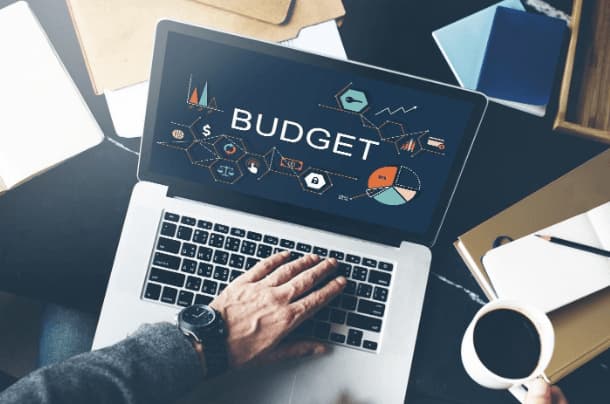- You are here:
- Home »
- Business »
- How to Create a Monthly Budget
How to Create a Monthly Budget
How to Create a Monthly Budget
If you want to learn how to manage your money, one of the best ways to do so is by creating a monthly budget. Never created a budget before? It’s okay, we’ve got your back. Below, we’ll dive into how to create a budget so you can make savings goals, build up emergency savings, or even save up enough money for a down payment on a house!
Step 1: Budget before the month starts
 It’s crucial to start thinking about your budget before the month even begins – that’s how you’ll stay ahead and be prepared.
It’s crucial to start thinking about your budget before the month even begins – that’s how you’ll stay ahead and be prepared.
Step 2: Figure out your income
Income, in this case, is defined as any money you plan to receive during the month. Whether that’s in the form of paychecks, contract jobs, tips, etc. If you work a job with variable pay, consider averaging out what you normally get by using historical data.
Step 3: Establish your fixed expenses
Your fixed expenses include things like your car insurance, renter’s insurance, your rent, your phone bill, utilities, and student loan payment. These are expenses that don’t change month to month.
Step 4: Enter your common monthly expenses
Now, it’s time to add up all the expenses that are variable each month. For example, if you use more electricity one month, you’ll likely have a bigger bill to pay. The same idea applies to gas and other expenses.
This is the part of the budget that also includes your discretionary spending, like dining out and your streaming subscriptions for entertainment like Disney+ or Hulu.
When you’re adding up your expenses, you might get a small heart attack from seeing your disposable income by whittled away by your frivolous spending. But don’t worry, you can start learning where to cut back your spending after taking it all into account as a first step.
Step 5: Be month-to-month specific
Do you spend more during different months? For example, it’s not uncommon to spend more around the holidays when you’re spending more money on presents and gifts for loved ones in your life. Or, is your anniversary or yearly membership dues coming up? Well, you can plan ahead by writing those special events down somewhere you’ll actually remember. That way, when the month in question rolls around, you’ll know that you’ll be doing a little more spending that month.
Step 6: Decide on your money goals
 Do you know where you want to be financially in the next year or five years? If not, today’s the day to start thinking about it! Create a goal that’s measurable. For example, maybe you want to save $10,000 by the time the current year is over.
Do you know where you want to be financially in the next year or five years? If not, today’s the day to start thinking about it! Create a goal that’s measurable. For example, maybe you want to save $10,000 by the time the current year is over.
Write out how much you’ll need to put away in savings each month to hit that target. To make it even easier, use a monthly budget calculator to crunch the numbers for you.
Besides setting up your monthly budget, it’s also a good idea to keep some basic rules of thumb in mind as well.
Tip #1: Create emergency savings
Nobody can predict an emergency but it’s important to be prepared financially to deal with one. One study found that most Americans could not unexpectedly pay for a $400 expense. If that group includes yourself, consider building up a financial buffer that can help you weather an unexpected expense or circumstance. If you lose your job or have an emergency surgery, will you be able to keep making your rent or mortgage payment, for example? If the answer to that question is, “No,” then it’s time to take a hard look at your discretionary spending to see where you can make cuts.
Tip #2: Track your spending
When you use a credit card, it’s incredibly easy to lose track of how much money you’re spending. Swiping plastic doesn’t even feel like spending money! However, make sure that you use an app or check your credit card statements. Not only will this alert you to potential mistakes, like accidental over-charges, for example, but it will also keep your accountable. Numbers don’t lie, after all!
Conclusion
Budgeting isn’t the most fun task in the world but the results: a bigger savings account and healthier finances can be very rewarding in their own right! So, consider creating a monthly budget so you can figure out your cashflow to start. Then, you should come up with some reasonable financial goals. With these tips in mind, you’ll be on your way to a more stable financial future.

